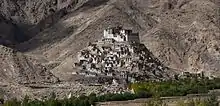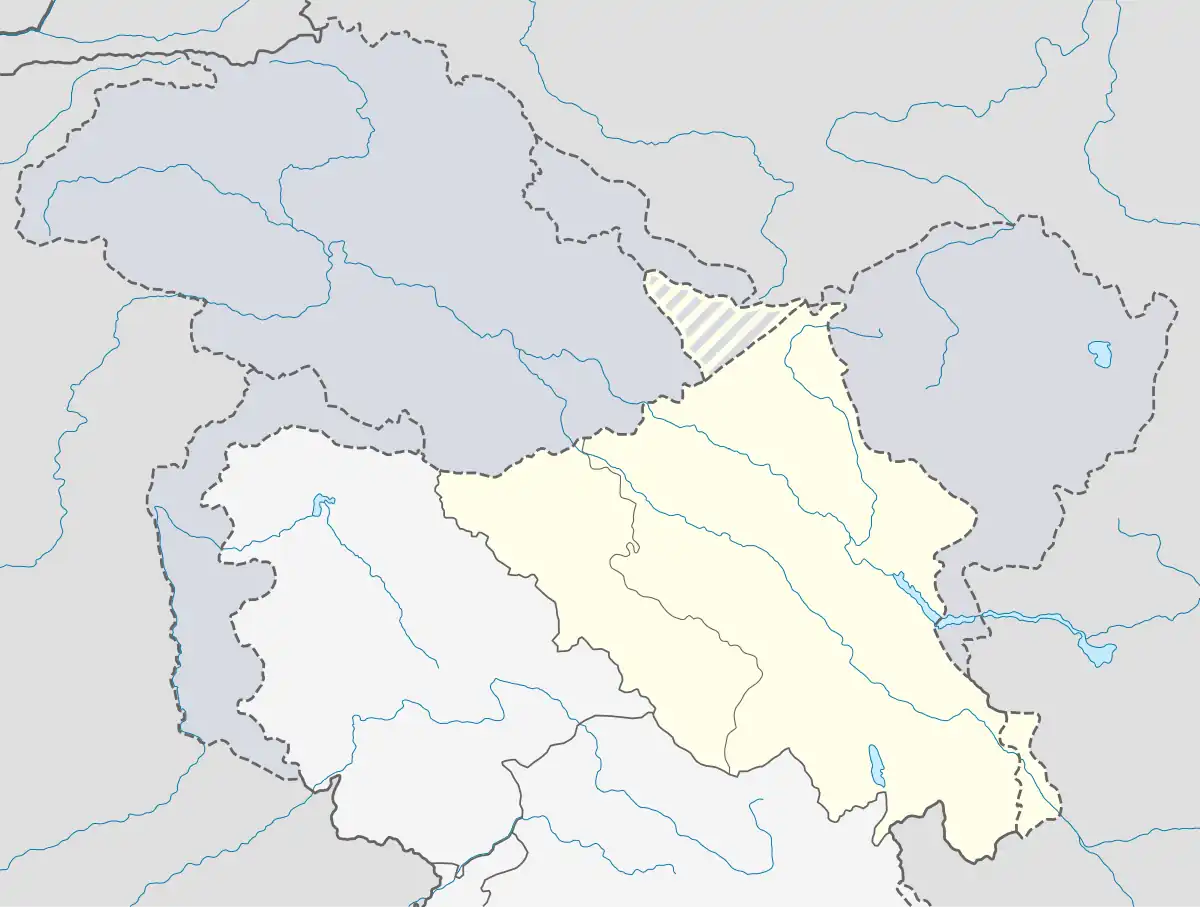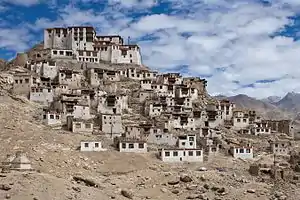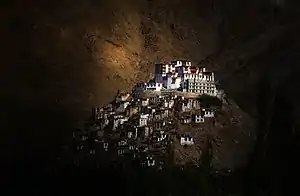| Chemrey Monastery | |
|---|---|
 | |
| Religion | |
| Affiliation | Tibetan Buddhism |
| Sect | Drukpa |
| Deity | Sengge Namgyal |
| Festivals | Sacred Dances - 28th and 29th day of the 9th month |
| Location | |
| Location | Ladakh, India |
 Location within India | |
| Geographic coordinates | 33°58′N 77°48′E / 33.967°N 77.800°E |
| Architecture | |
| Founder | Tagsang Raschen |
Chemrey Monastery or Chemrey Gompa in Indus River valley is a 1664 Buddhist monastery in Leh district of Ladakh in northern India. It is 6 kilometres (3.7 mi) north of Hemis Monastery, 46 kilometres (29 mi) southeast of Leh and 24 kilometres (15 mi) northwest of Upshi. It belongs to the Drugpa monastic order. It was founded in 1664 by the Lama Tagsang Raschen and dedicated to King Sengge Namgyal.
The monastery has a notable high Padmasambhava statue. It also contains a valuable collection of scriptures.[1]
The monastery comprises a number of shrines, two assembly halls (Du-Khang) and a Lama temple (Lha-Khang). The main attraction of the monastery is the one storey high statue of Padmasambhava. Another big attraction is the 29 volume scripture written in silver and golden letters.
The monastery holds every year the Chemrey Angchok festival of sacred dances.[2]
Gallery
 Chemrey Gompa viewed from the southwest
Chemrey Gompa viewed from the southwest Chemrey Monastery
Chemrey Monastery
See also
References
- ↑ "Chemrey Gompa". Buddhist-temples.com. Retrieved 30 September 2009.
- ↑ "Welcome to Ladakh - Getting There". Archived from the original on 24 July 2015. Retrieved 23 July 2015.